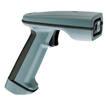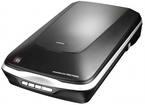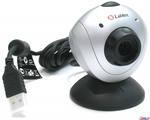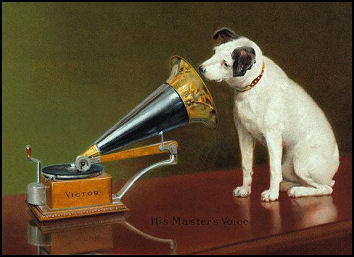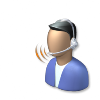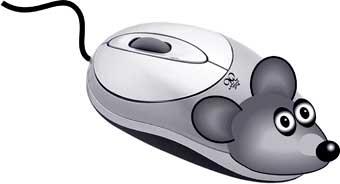
- •А.Д. Музафарова а.Г. Ковалева
- •Vocabulary practice section 1
- •Vocabulary practice section 2
- •Vocabulary practice section 3
- •Vocabulary practice section 1
- •Vocabulary practice section 2
- •Vocabulary practice section 3
- •Our guide to cleaning and maintaining your keyboard.
- •Vocabulary practice section 1
- •Vocabulary practice section 2
- •Vocabulary practice section 3
- •1. Communication between the primary storage unit and the arithmetic-logical and control units
- •2. Arithmetic-logical unit functional diagram
- •3. Control unit functional diagram
- •Vocabulary quiz.
- •Vocabulary practice section 1
- •Vocabulary practice section 2
- •Vocabulary practice section 3
- •Vocabulary practice section 2
- •Vocabulary practice section 1
- •Vocabulary practice section 1
- •Vocabulary practice section 2
- •Vocabulary practice section 3
- •Windows 2000
- •People and computers: information society
- •Input devices
- •Data processing
- •Output devices
- •Data storage
- •Operating systems
- •Список использованной литературы
Vocabulary practice section 3
1. Identify the input devices in the pictures below and tell about their functions.
|
1 |
2 |
3 |
4 |
|
|
|
|
|
2. Which input device would you use for these tasks?
|
1. to play computer games 2. to copy images from paper into a computer 3. to read price labels in a shop 4. to select text and click on links on web pages 5. to enter drawings and sketches into a computer 6. to input voice commands and dictate text 7. to draw pictures or select menu options directly on the screen 8. to take and store pictures and then download them to a computer 9. to email a copy of a letter from your email box 10. to a make a video 11. to take photos |
|
3. Decide if these sentences are true or false. If they are false, correct them.
The details detected by a scanner are not determined by its resolution.
A barcode scanner is a computer peripheral for reading barcode labels printed on products.
Scanners cannot handle optical character recognition.
A digital camera uses a light sensitive film instead of a memory card for storing the images.
A digital video (DV) camera is used to take still photographs.
Video editing software allows you to manipulate video clips on the computer.
4. Complete this advertisement with words from the Key Information Section.
|
Having (1) … with friends and family has never been easier or more enjoyable. You get the highest-quality audio and video, no matter which chatting solution you use. With the WebCam Live! Ultra, its CCD image sensor with 640 x 480 (VGA) resolution produces rich, vibrant colours. Combined with its (2) … 2.0 Hi-Speed connection, the result is top-quality |
|
full-motion video at 3Q (3) … per second for all your web conversations, even in dimly-lit rooms.
The WebCam Live! Ultra lets you do more. Let your voice be heard clearer than ever before with the included (4) … unlike the built-in microphones in most other (5) … . Take still pictures at up to 1.3 (6) … resolution (interpolated), and enjoy the many great features that accompany the bundled award-winning WebCam Center software, such as motion detection, remote security monitoring, timelapse video capture and much more.
5. Read the notes about two input devices. Then describe them to your partner. He/she has to guess what you are describing.
|
|
a) It scans text and pictures and sends digitized image to computer. b) It allows you to control computer vocally and spoken commands do what is normally done with keyboard/mouse. c) It controls the cursor and selects items on the screen, works like upside-down mouse and ball on top turned round with figures. |
d) It lets you interact with computer. You move pressure-stylus across the surface of a tablet and create graphics.
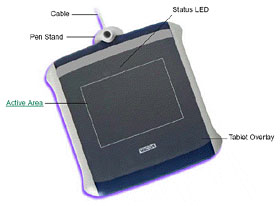
6. Complete this review of a digital camcorder using words from the box.
|
additional processing player optimized controller powerful |
The DF201 benefits from a (1) … optical zoom lens and a video image (2) … designed for High Definition (HD) recording. Features include a ‘Quick Start’ button and an intuitive menu system, easily navigated using a joystick (3) ... The camcorder is (4) … for high-resolution true widescreen recording and offers (5) … features such as a 2.7” LCD and a 0.27” 16:9 colour EVF (Electronic Viewfinder), which allow users to compose and play back video in the same dimensions that it will be displayed on a widescreen TV set. It is then a simple process to finalize the DVD in-camera before playing it back in a compatible home DVD (6) ...
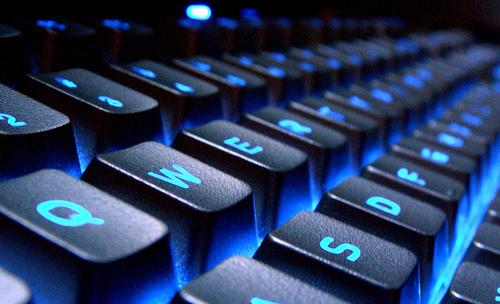
GRAMMAR PRACTICE SECTION
|
Conditionals
1. Match the sentences with the explanations. |
|
|
1. When you buy a computer in the shop you always get an operating manual. |
a. future events that will happen, or likely to happen - 1stconditional |
|
2. If you increase your order of CDs and DVDs, we’ll give you a bigger discount. |
b. If or When can be used where the meaning is “every time” - 0 conditional |
|
3. If you surfed the Internet yesterday, you probably learnt the news. |
c. imaginary past event, but the result refers to the present - mixed conditional |
|
4. If the program were better, we wouldn’t be doing it for such a long time. |
d. things that are always or generally true - 0 conditional |
|
5. When anyone rings my mobile, I get a photograph of the person on the screen. |
e. events that are different to what really happened with a suggestion of criticism or regret (imaginary past) - 3rd conditional |
|
6. If I had reinstalled the operating system, my computer wouldn’t have crashed. |
f. imaginary, unlikely, impossible future events - 2nd conditional |
|
7. If I had upgraded my computer, I wouldn’t have these problems now. |
g. past events which possibly happened |
2. Put the verbs into the correct form in the conditional sentences.
A .
If your mobile phone (1) … (can/ talk), it (2) … (can/ reveal) a
great deal. If it (3) … (be) privy to your calls and text messages,
and possibly your e-mail and diary, obviously it (4) … (know) many
of your innermost secrets.
.
If your mobile phone (1) … (can/ talk), it (2) … (can/ reveal) a
great deal. If it (3) … (be) privy to your calls and text messages,
and possibly your e-mail and diary, obviously it (4) … (know) many
of your innermost secrets.
B. Some years ago if your phone (5) … (know) where you were, how you got to work, where you liked to go for lunch, what time you got home, it (6) … (be) a great surprise. But it couldn’t.
C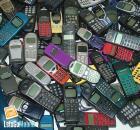 .
Now imagine! If it (7) … (be) possible to aggregate this sort of
information from large numbers of phones. It (8) … (be) possible to
determine and analyse how people move around cities, how social
groups interact, how quickly traffic is moving and even how diseases
might spread. The world’s 4 billion mobile phones (9) … (be)
turned into sensors on a global data-collection network.
.
Now imagine! If it (7) … (be) possible to aggregate this sort of
information from large numbers of phones. It (8) … (be) possible to
determine and analyse how people move around cities, how social
groups interact, how quickly traffic is moving and even how diseases
might spread. The world’s 4 billion mobile phones (9) … (be)
turned into sensors on a global data-collection network.
D. Phones (10) … also (be) used to collect data in more direct ways. Sensors inside phones, or attached to them, (11) … (gather) information about temperature, humidity, noise level and so on.
E. More straightforwardly if it (12) … (be) necessary, people (13) … (send) information from their phones, by voice or text message, to a central repository. This can be a useful way to gather data quickly during a disaster-relief operation, for example, or when tracking the outbreak of a disease.
READING PRACTICE SECTION
|
Speech-recognition
|
|
Mobile phones and the Internet have changed the way we communicate. However, we still need to use the keyboard and the mouse to communicate with computers. When shall we be able to interact with PCs by voice? Speech recognition systems can make this possible soon in fact, speech companies claim that their programs let you dictate, control your PC by voice command, and convert text into speech.
The most popular voice recognition packages are IBM ViaVoice, Dragon NaturallySpeaking and L&H Voice Xpress. If you decide to buy one speech program, look for these features:
1. All the programs let you dictate text directly onto your word processor, spreadsheet or email.
They claim an accuracy rate of around 98 percent. The technology is particularly useful to dictate notes, business memos, letters and e-mail.
2 .
Speech programs are usually more accurate if you train the software
by reading aloud for about
.
Speech programs are usually more accurate if you train the software
by reading aloud for about
20 minutes. This process involves reading sample text and teaches the program to recognize words that are not in its built-in dictionary (e.g. proper names, acronyms, unusual words). Most products let multiple users personalise their vocabulary and pronunciation.
3. They offer useful voice commands for editing and formatting (e.g. setting font size and style, text alignment etc.). However, it’s a bit difficult to make corrections by voice; using the keyboard may be faster and more accurate.
4. Speech software allows you to use commands to launch programs or to navigate around windows and menus. You can also tell your programs to open a file, save it in a particular format or print it.
5. Some systems let you search the Web by voice. The Web version of IBM ViaVoice enables chat room users to chat using their voices rather than keyboards. Dragon NaturallySpeaking lets you browse the Web by speaking URLs and links, and dictate into online forms and fields in Microsoft Internet Explorer.
Speech recognition requires a powerful processor (500 MHz Pentium recommended), 64 MB of RAM, a good sound card, and a high-quality headset microphone.
Speech recognition technology has improved a lot and its potential is enormous, but some experts consider that it is not ready for common use yet. Some day, however, we’ll be talking to our PC naturally, like a friend.
1. Tick the features mentioned in the article and give details from the text.
|
1. Activate menus by saying the words on the screen 2. Execute applications by voice 3. Manage databases 4. Configure multiple voice profiles 5. Read documents to you using a text-to-speech system. 6. Surf the web by speaking 7. Create and compile a computer program
|
8. Take dictation with accuracy 9. Design graphics 10. Accept spoken commands
Speech-recognition icon |
2. With the help of the text, fill in the gaps in these sentences.
|
software dictate (2) package microphone interact voice recognition |
1. With many ……. programs, the user must first train the software to recognise individual pronunciations.
2. You can ……. into the program’s text screen, or you can ……. directly into any Windows application.
3. If you intend to do a lot of dictation, you should get a high-quality headset …….
4. Speech-recognition ……. could help children with special educational needs.
5. In a few years’ time, everyone will use voice commands to ……. with computers.
6. If I could afford it, I would buy a new PC and a speech-recognition …….
3. What do you think of the idea from the text: “Some day we’ll be talking to our PC naturally, like a friend”? Express your opinion.
|
|
SPEAKING/WRITING PRACTICE SECTION
1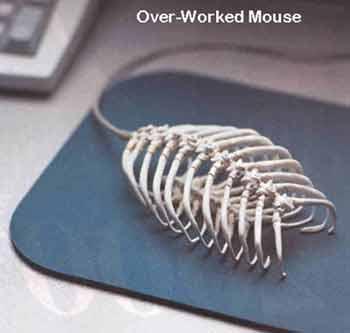 .Find a funny
picture of an input device and give comments.
.Find a funny
picture of an input device and give comments.
2. Find the information on the topics and make a report:
1. The evolution of input devices.
2. Classification of input devices.
3. Early input devices.
|
|
4. The most attractive input devices. 5. Some more functions of alphanumeric keys. 6. Wide usage of different kinds of scanners. 7. New technologies and touch screens. 8. Is it just a mouse? 9. Cameras – from history to the future. 10. Future of input devices.
|
3. Look through the text and make an instruction how to take care of any computer input device.

